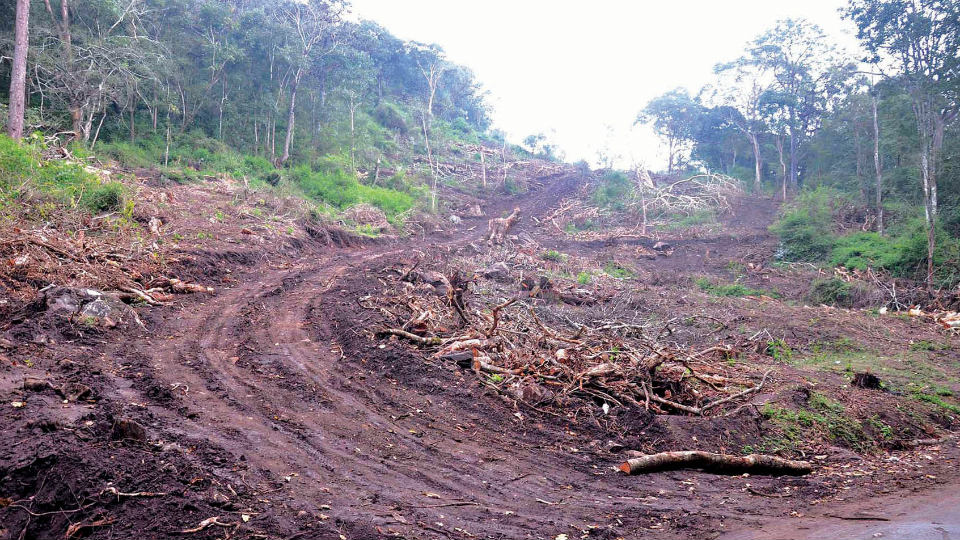New Delhi: The India State of Forests 2017 report has been released by the Ministry of Environment and Forests on Feb. 12 and it shows that while the Karnataka’s conservation efforts and thrust towards agro-forestry is leading to an impressive increase of 1,101 square kilometres of tree cover, eco-sensitive areas such as Kodagu and Shivamogga continue to see a rapid decline in the same.
Releasing the India State of Forest Report (ISFR) 2017, Union Minister for Environment, Forest and Climate Change Dr. Harsh Vardhan said that India has shown an increasing trend in the forest and tree cover in comparison to the global trend of decreasing forest cover during the last decade.
The ISFR shows that India’s total forest cover increased by 0.94 per cent, from 7,01,673 square kilometres to 7,08,273 square kilometres since its last assessment in 2015.
The report that tabulates tree cover every two years using satellite imagery says that green cover in Karnataka has increased to 37,550 square kilometres up from 36,421 square kilometres in the 2015 report. Karnataka ranks second in the country in terms of increase in forest cover.
The report notes that better satellite data, large-scale increase in plantations, conservation efforts and density improvement of shrub forests are behind the increase.
But what is alarming for Karnataka is that the Western Ghats, one of the greenest and rarest geographical areas in the world, is slowly losing its green cover. The key districts of Western Ghats Shivamogga and Kodagu have lost 189 square kilometres of forest area, says the report.
In Kodagu, 102 square kilometres of tree cover has been lost since 2015. Very Dense Forests (defined as more than 70% tree cover in a patch of land) has seen a dramatic increase, which officials attribute to increase in conservation of forest patches and rejuvenation efforts.
However, moderately dense (defined as between 40% and 70% tree cover in a patch of land) and open forests (10% to 40% tree cover) has been reduced by over 654 square kilometres. The report mentions that over 81% of Kodagu has forest cover.
Reacting to the contents of the report to Star of Mysore, Coorg Wildlife Society President Colonel (retd.) C.P. Muthanna said that indiscriminate development in Kodagu has led to the destruction of forests. Like for example, over 60,000 trees were cut in South Kodagu for the high-tension power line between Mysuru and Kozhikode in Kerala.
“Some of this tree cover decline is through legal means as people are converting cardamom plantations to coffee plantations that require clearing of trees. But the concern is the commercialisation of property with resorts or layouts coming up. This must stop,” he said.
Explaining Tree Cover and Forest Cover, he said that while Tree Cover can be a coffee and pepper estate where there are a lot of trees inside the plantations, the Forest Cover is the jungles and the National Parks and hill ranges that encircle Kodagu.
“For rains to happen and water resources to fill, Kodagu needs both Forest Cover and the Tree Cover. The solution is to stop commercialisation, unnecessary infrastructure projects. Also, a scheme to encourage those in the district to keep greenery of their plantation must become a reality,” he said.
“Our main concern is to stop unnecessary infrastructural projects that are being planned for Kodagu. Prime among them are the Mysuru-Thalassery Railway Line that will cut through the green landscape of South Kodagu and the Mysuru-Kushalnagar-Mangaluru Railway Line. In addition, several National Highways are being proposed for the convenience of Kerala travellers. This exploitation must stop. With these projects, how can one expect the green cover to increase in Kodagu? With such indiscriminate development, River Cauvery will go dry,” he warned.








Recent Comments